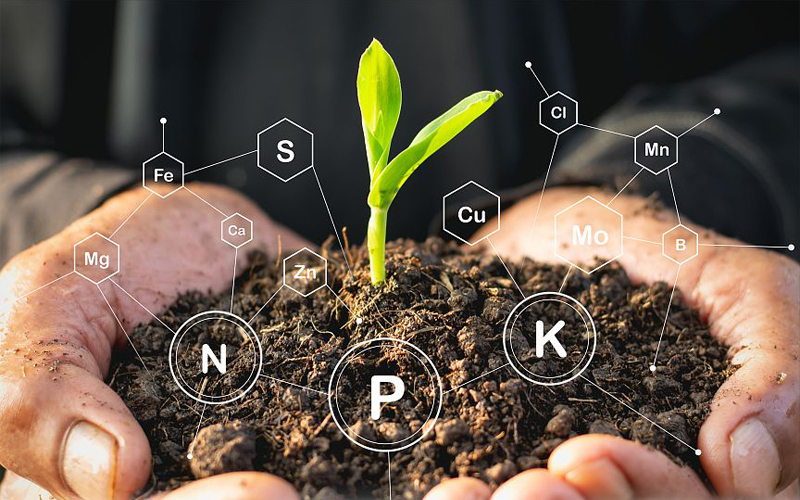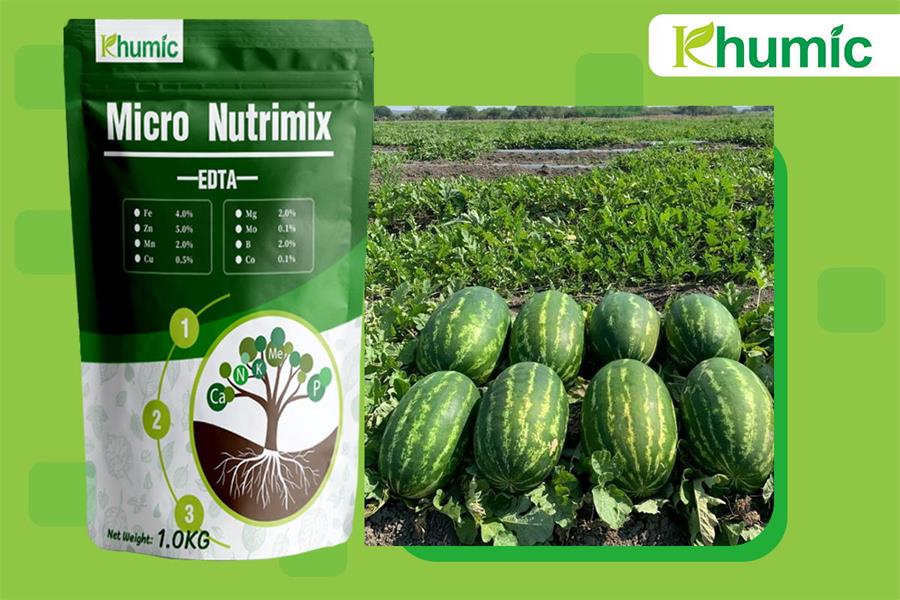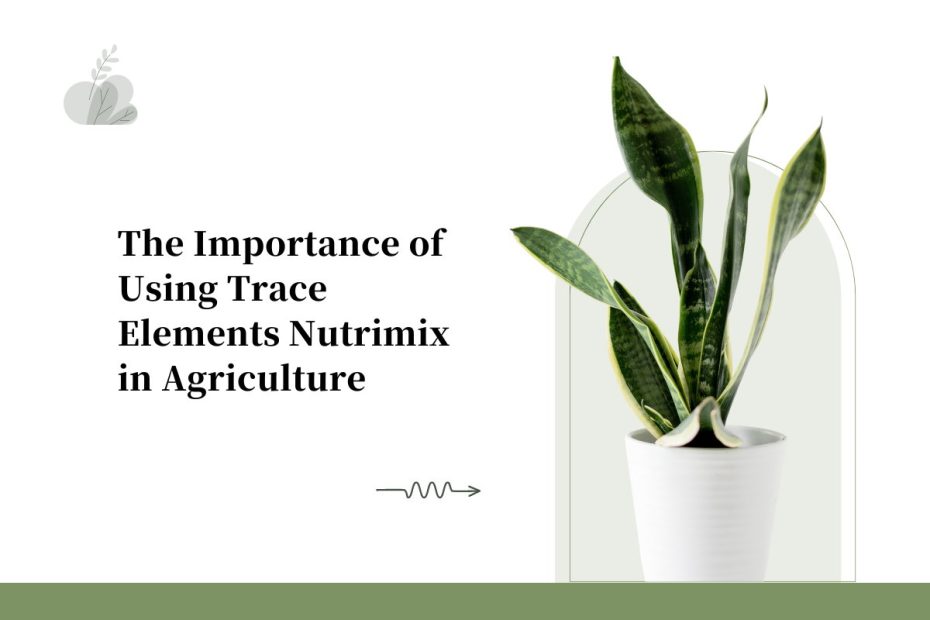Introduction
Among the series of nutrients found in organic fertilizers, fourteen elements are critical to healthy crop growth. They are divided into macronutrients and micronutrients (or trace elements), which have a significant impact on maximizing crop yields and ensuring optimal plant health. Therefore, there needs to be enough nutrients in the soil for plants to absorb. Soil pH and texture greatly impact nutrient availability and nutrient deficiencies. In this article, we will explore what are trace elements. How do trace elements work in soil? What role does Trace Elements Nutrimix fertilizer play in providing plants with micronutrients that are often lacking in the soil?
Table of Contents
What are Trace Elements?
Trace elements, also known as micronutrients, are essential nutrients required by plants to achieve physiological functions such as growth and development, such as photosynthesis, enzyme activation, and enhanced disease resistance. Micronutrients include iron, zinc, manganese, copper, boron, molybdenum, and chlorine, among others. Although present in small numbers, their absence can negatively affect plant growth, development, and overall productivity.

The Importance of Trace Elements in Plant Health
Molybdenum(Mo)
Molybdenum is a component of enzymes involved in plant nitrogen metabolism, reducing iron and phosphorus in plants as well as nitrate to nitrite and converting nitrate into ammonium, which is essential for protein synthesis. And contributes to the production of various plant hormones.
Symptoms of molybdenum deficiency include:
- Yellowing of leaves, starting at the edges and progressing inward, often resembles a nitrogen deficiency.
- Growth and development are retarded and yield is reduced.
- Leaf edges are wilted or scorched.
- Spotting or interveinal chlorosis (yellowing between the veins).
- Flowering and fruiting of fruit-bearing plants are reduced.
Copper (Cu)
Copper is important in the formation of plant proteins, vitamins, carbohydrates, and enzymes. It is a cofactor for photosynthesis, respiration, and lignin synthesis enzymes. Helps iron absorption. At the same time, it can strengthen the plant’s cell wall and improve its resistance.
Symptoms of copper deficiency:
- Plants may experience stunted growth and reduced yields.
- Leaves may show signs of chlorosis (yellowing) between the veins, indicating a lack of chlorophyll.
- A copper deficiency can cause leaves to curl or become deformed.
- Defense mechanisms are weakened and people are more susceptible to certain diseases.
Chlorine(Cl)
Chlorine helps regulate the pores in plant leaves that facilitate gas exchange for photosynthesis. Participates in osmoregulation to maintain proper water balance, helps transport nutrients within plants, and can act as a natural fungicide. But its demand is very small.
Symptoms of chlorine deficiency:
- Wilting, leaf necrosis (browning or yellowing)
- Poor growth and reduced fruit yield.
- Increased susceptibility to certain diseases and environmental stressors.
Notice! Excess chlorine can be toxic to plants, causing symptoms such as leaf burns and even plant death.
Zinc (Zn)
It is an important component of many enzymes in plant metabolism. Plays a role in growth hormone and protein synthesis. Contributes to chlorophyll production, photosynthesis and carbohydrate metabolism, stem elongation, and plant vein development.
Symptoms of zinc deficiency:
- Leaves turn yellow and turn green, usually starting at the base of the leaves.
- Birth growth slows and leaves become smaller.
- The intervals of new leaves turn yellow, while the veins remain green.
- Takes longer to reach maturity.
- Reduced fruit or seed production.
- Leaves may appear unusually shaped or curled.
Iron (Fe)
Iron is an important component of enzymes involved in plant chlorophyll synthesis, photosynthesis and respiration. Also contributes to the formation of plant pigments and plays a role in nitrogen and sulfur metabolism. Additionally, iron aids in the electron transfer process, which is critical for energy production and nutrient absorption.
Symptoms of iron deficiency:
- Interveinal chlorosis is when the leaves turn yellow but the veins remain green. (Occurs on younger leaves.)
- Exhibit slow growth and overall reduced size.
- The leaves brown, brown spots or edges appear, and then the leaves become necrotic.
- Reduced flowering and fruit production
Boron(B)
Boron is used for cell elongation, cell division, and enzyme production, promoting sugar transport, root elongation and nitrogen metabolism. These enzymes organize cell division and the formation of cell walls, contributing to the good development of young shoots. Boron is also required for pollen tube elongation during plant fertilization.
Symptoms of boron deficiency:
- Stunted growth occurs, especially at the growing points of shoots and roots.
- Causes abnormal flower development, including reduced pollen tube growth and poor fruit set.
- The plant’s leaves may become thick and brittle and tend to curl or develop necrotic spots.
- Impaired cell wall formation results in hollow stems and roots, resulting in weakened plant structure.
- The fruit shows signs of discoloration, cracking, or internal browning, affecting its quality and marketability.
Attention! Excessive boron levels can cause phytotoxicity symptoms such as leaf tip burn, necrosis and reduced growth.
Manganese (Mn)
Manganese helps split water molecules and promotes plant metabolism and cell division. It is involved in the synthesis of chlorophyll and plays a vital role in the photosynthesis process. It also helps activate a variety of enzymes, such as those involved in nitrogen metabolism, to enhance plants’ nitrogen absorption and respiration. Manganese also contributes to plant defense mechanisms against oxidative stress.
Manganese deficiency symptoms:
- Interveinal chlorosis is when the leaves between the veins turn yellow, but the veins remain green. (Caused by interruption of chlorophyll production.)
- Susceptible to fungal diseases. Causes yellow spots to appear between the veins of leaves.
- Necrotic spots may appear on older leaves, causing tissue necrosis.
- Resulting in poor growth and poor root development.
- Reduced fruit set rate and poor fruit quality.
Relieve Nutritional Deficiencies with Micro Nutrimix
Nutrient deficiencies in plants can wreak havoc on crop productivity and overall plant vigor. Micro Nutrimix formula developed by KHUMIC is a holistic therapy to combat nutritional deficiencies by providing a carefully balanced blend of essential trace elements. Whether it’s zinc, iron, manganese, or copper, Micro Nutrimix ensures plants receive the full range of nutrients they need to thrive, resulting in stronger crops and improved soil fertility.

FAQs
Why are trace elements important in agriculture?
Trace elements are essential nutrients for plant growth and development, affecting their overall health and productivity.
How do farmers detect micronutrient deficiencies in plants?
Farmers can detect micronutrient deficiencies in their plants by observing specific symptoms such as chlorosis, stunted growth, deformed leaves, and stunted fruit.
What are the commonly used trace elements in agriculture?
Common trace elements used in agriculture include iron, zinc, manganese, copper, boron, molybdenum, chlorine, and nickel.
What are the different methods of applying trace elements to plants?
Micronutrients can be applied to plants through soil application, foliar application, seed treatment and hydroponics, depending on the plant’s specific needs.
Why is balanced nutrition important for plant growth?
Maintaining a balance of all essential nutrients, including trace elements, is essential to ensure optimal plant growth and agricultural productivity.
